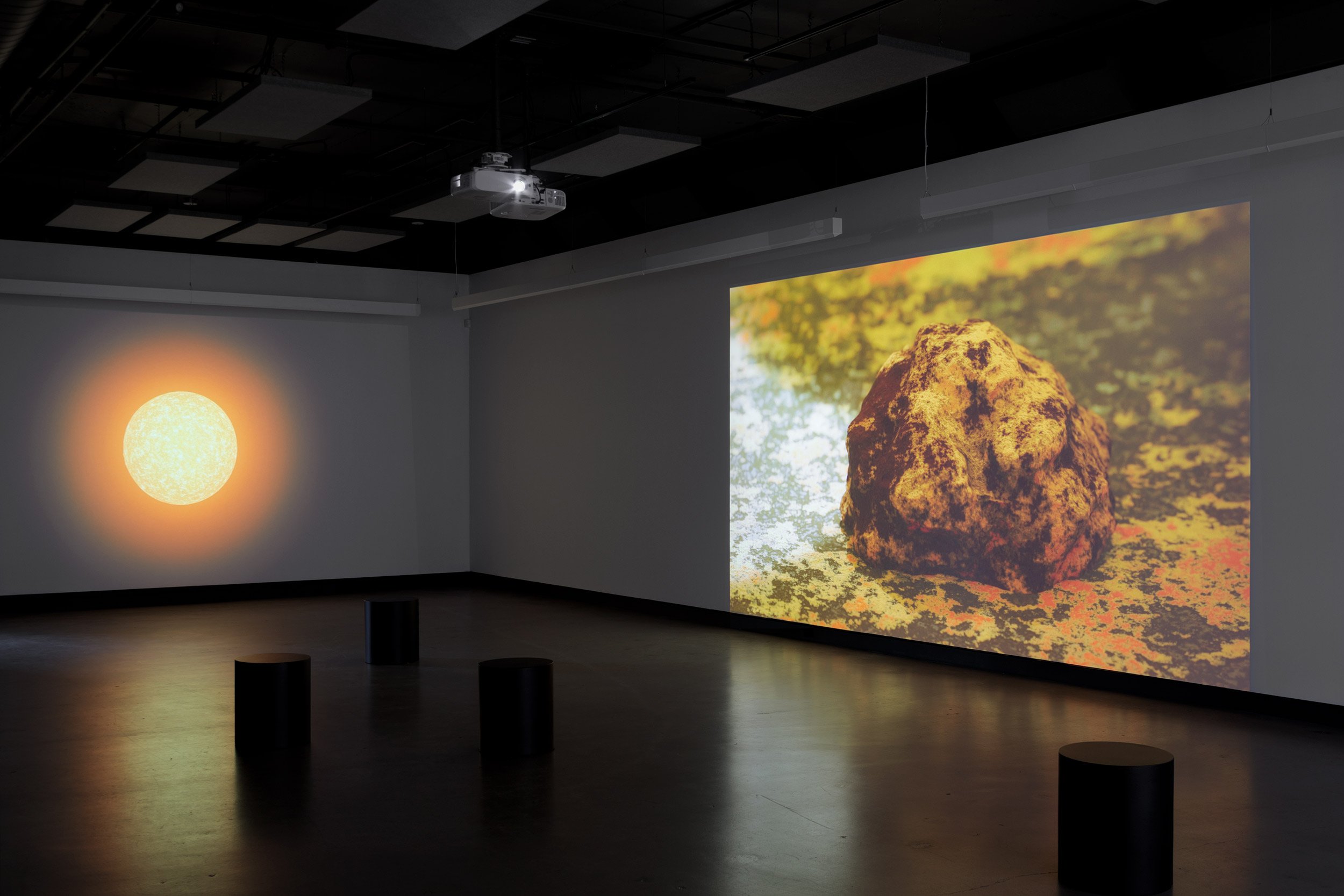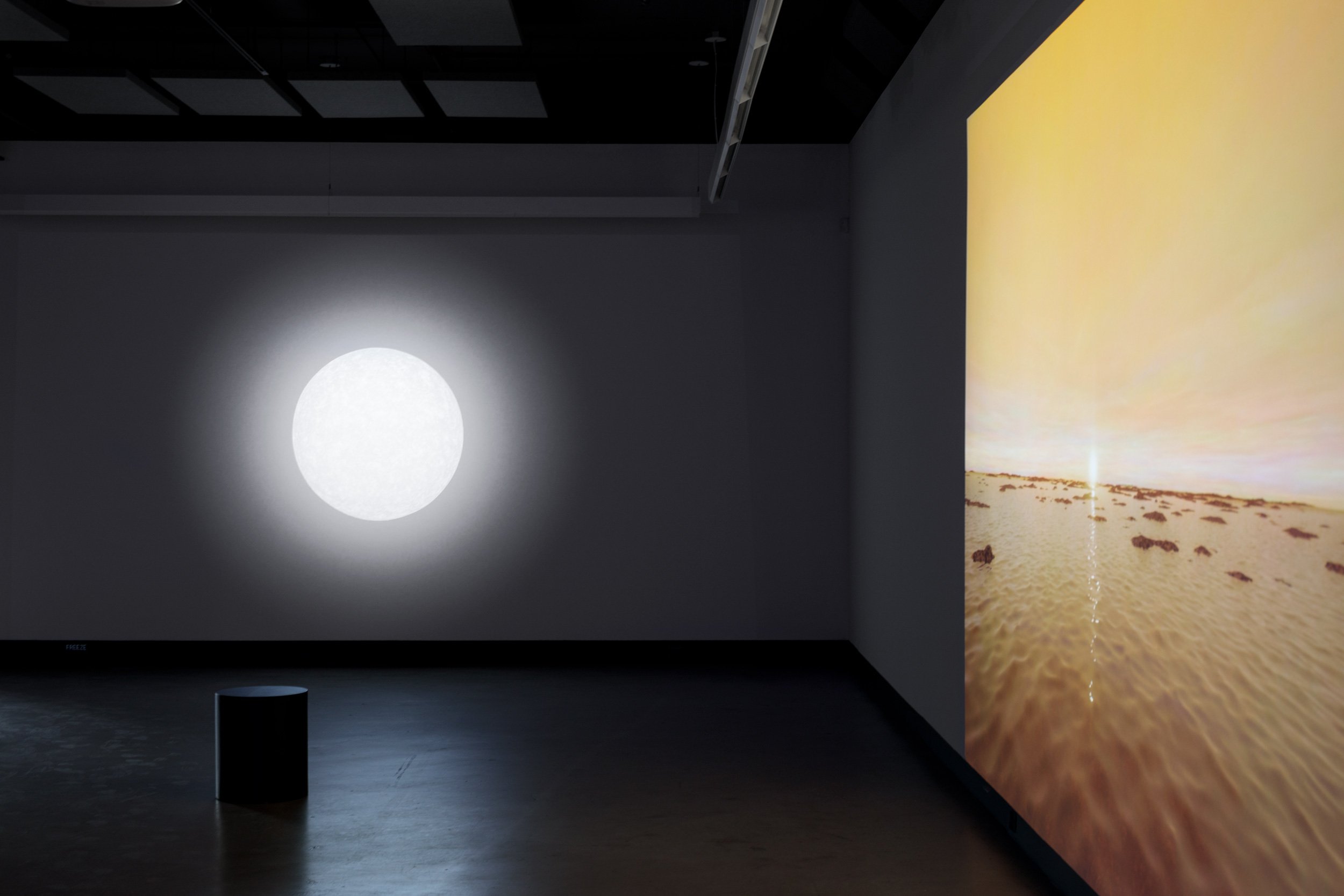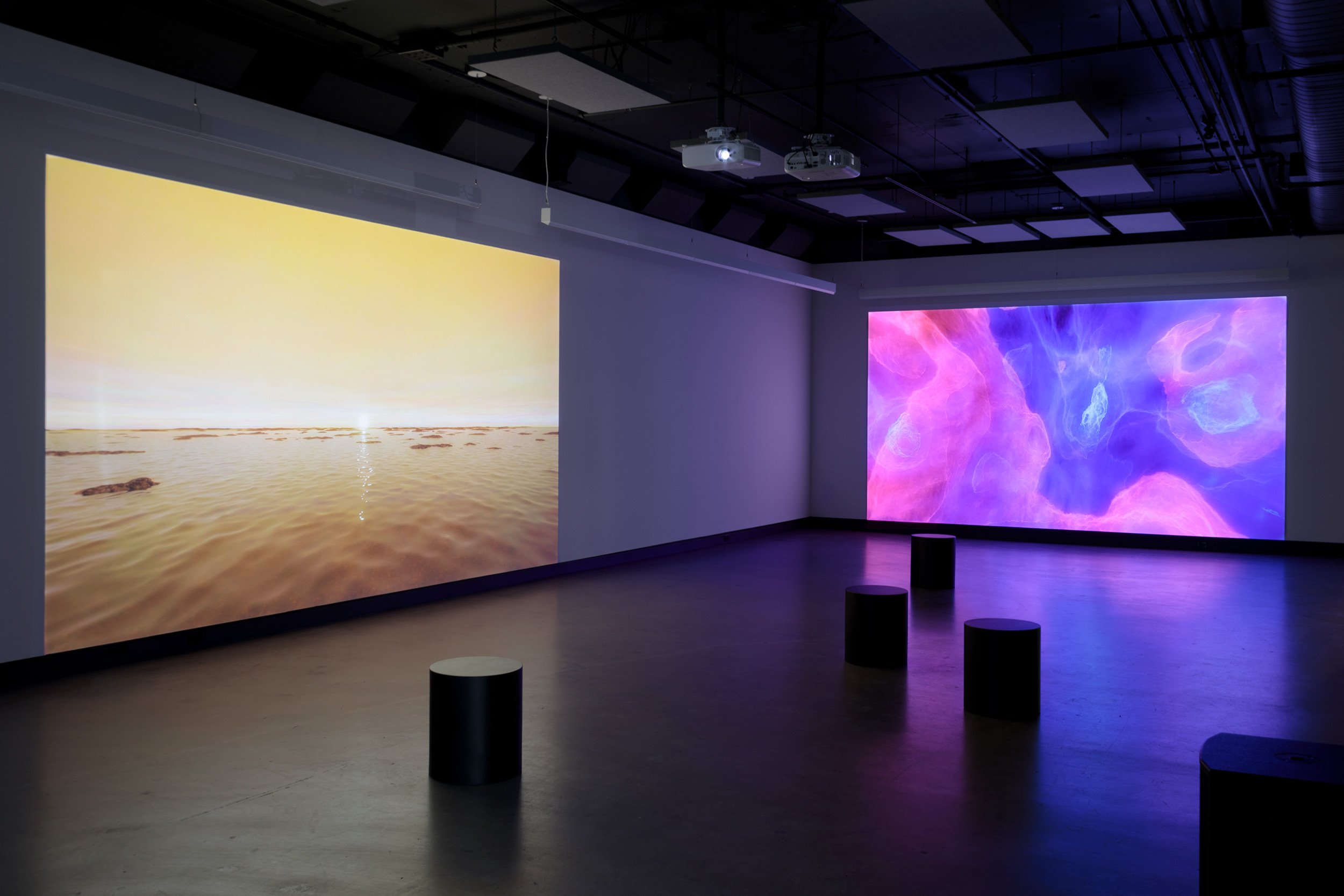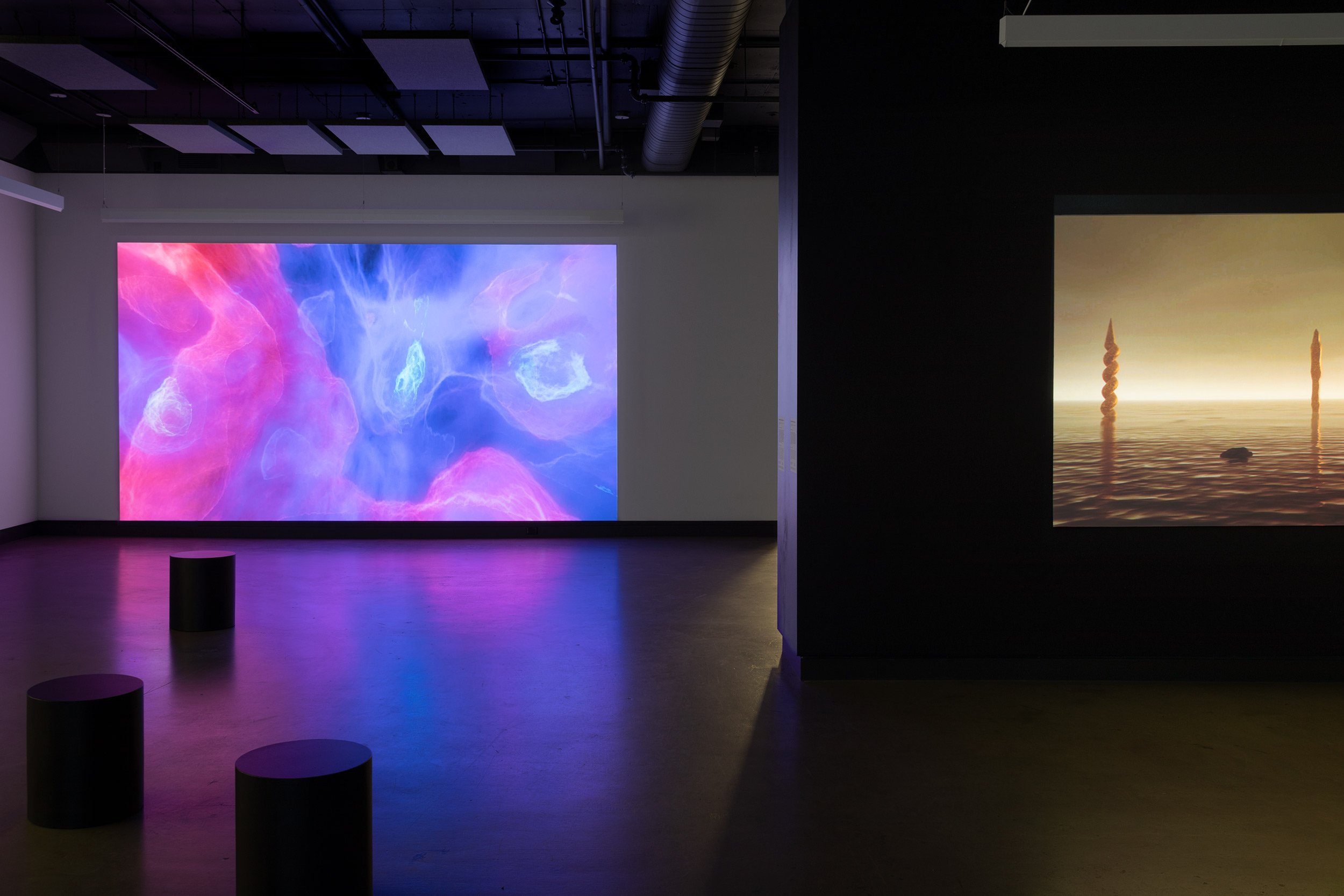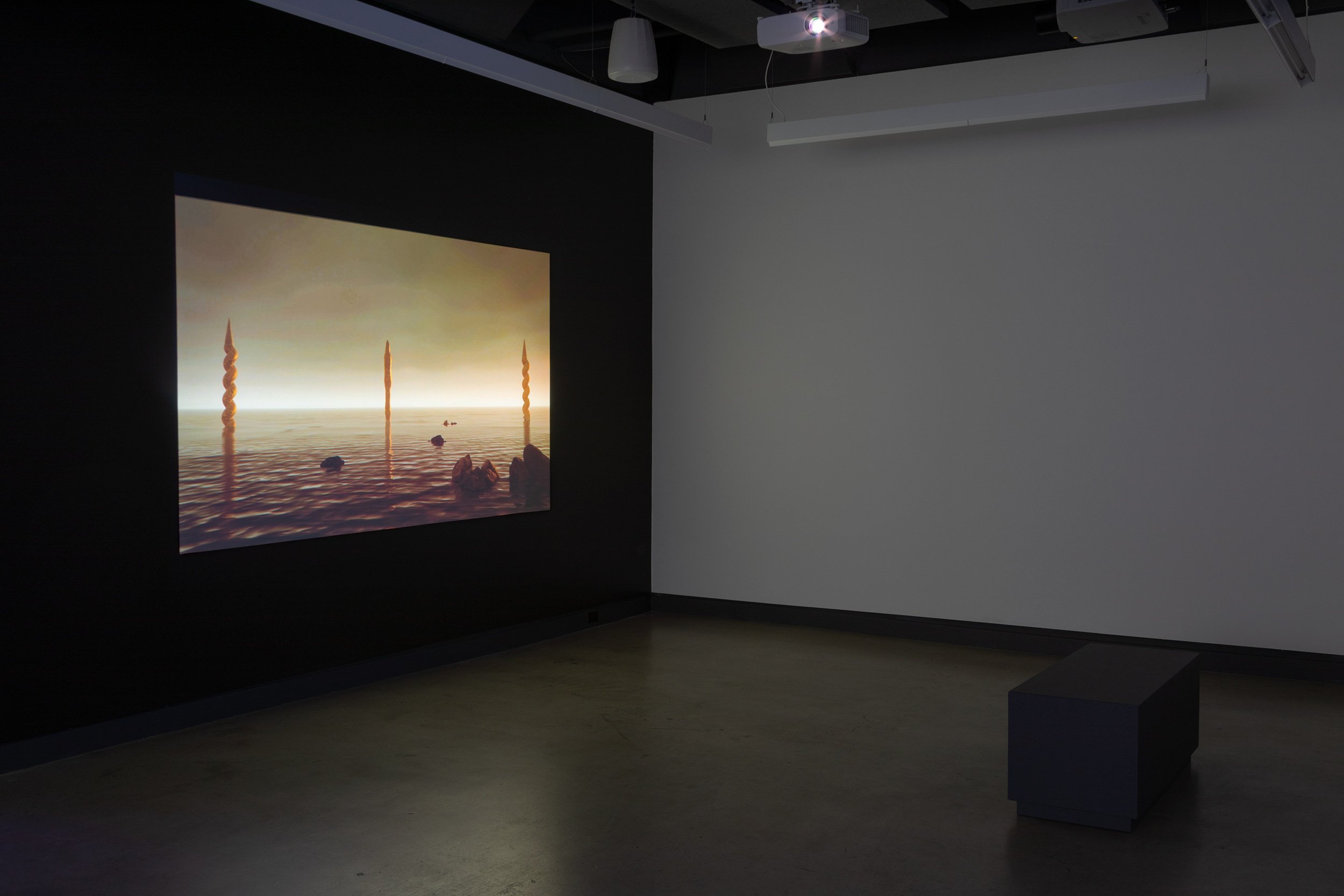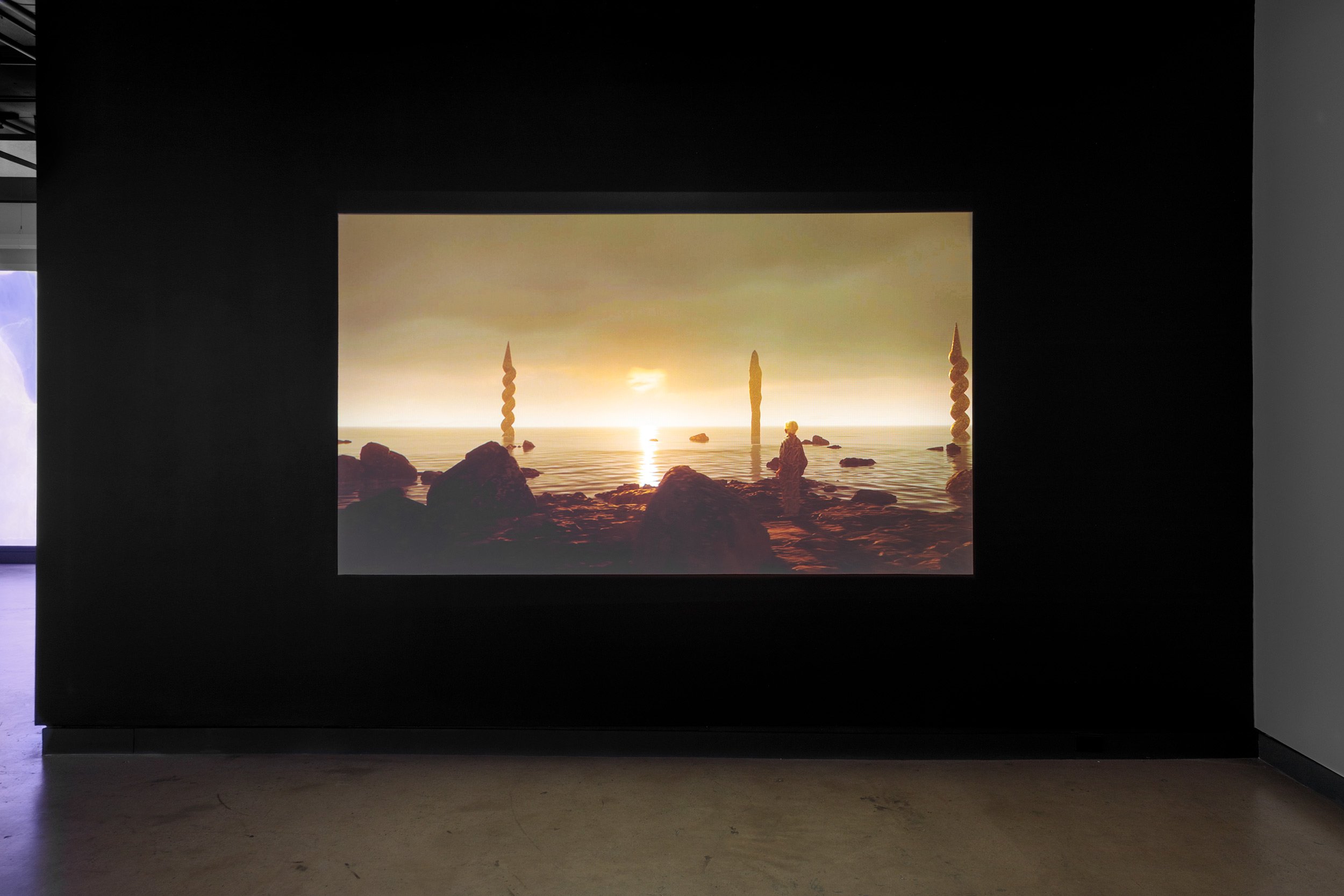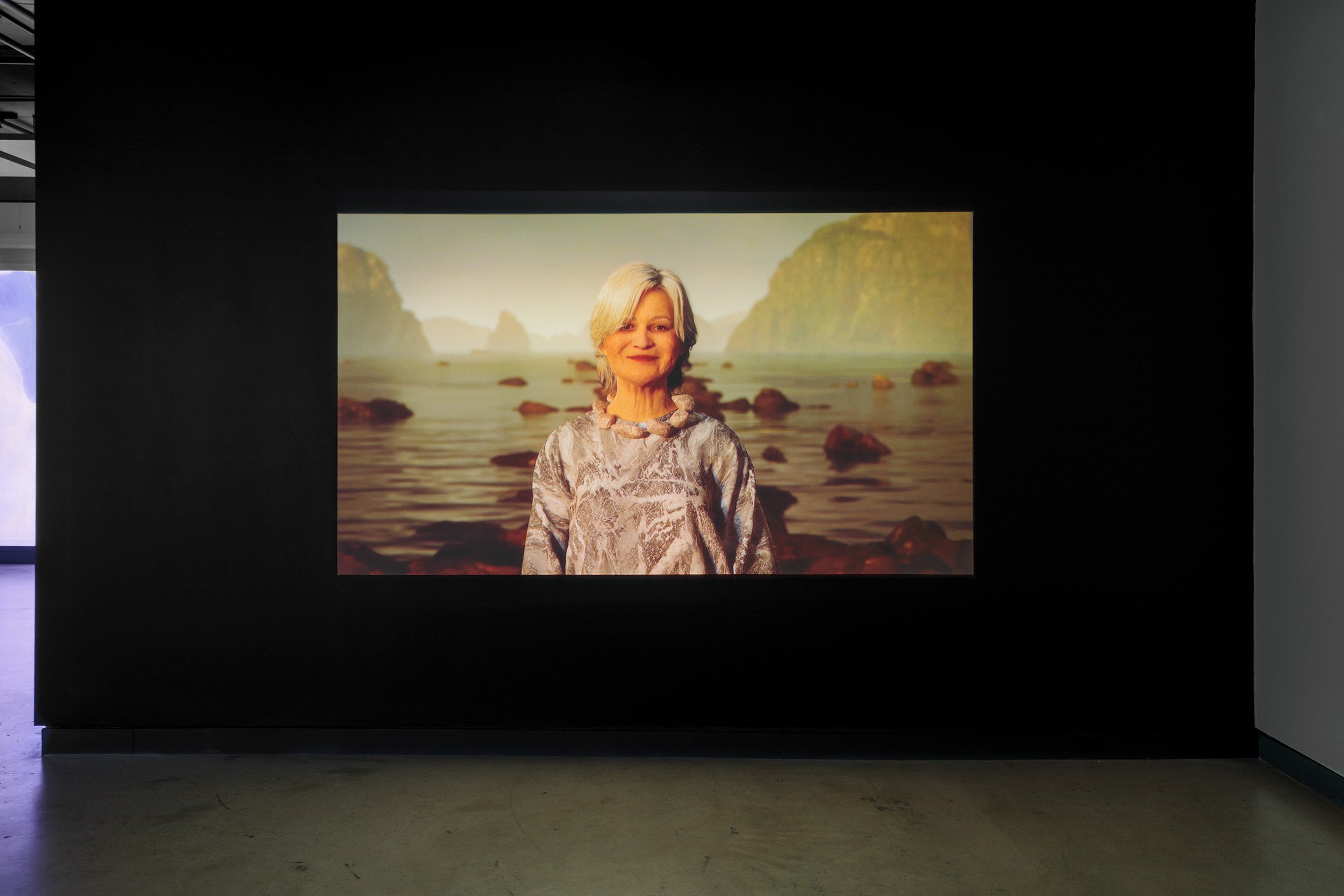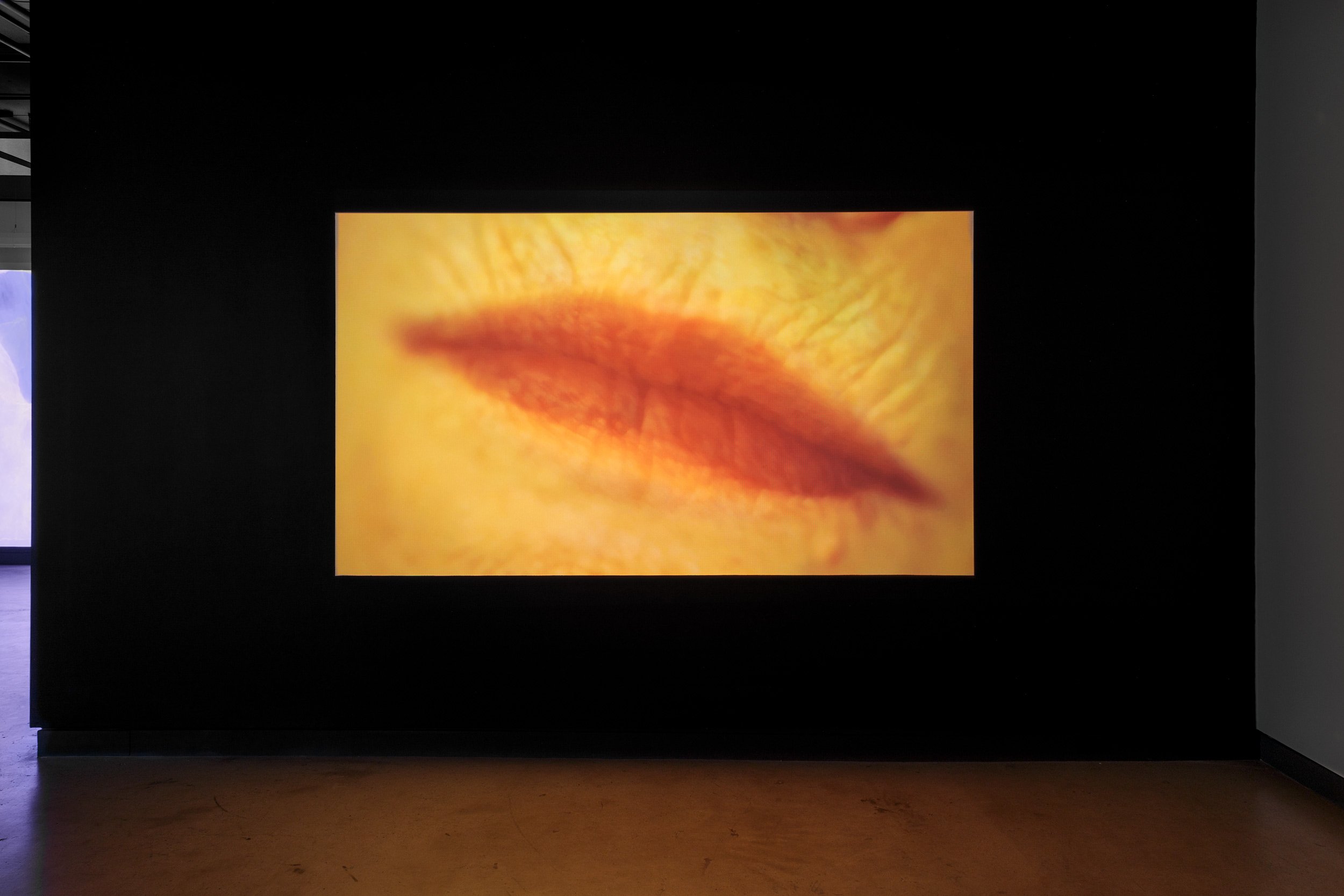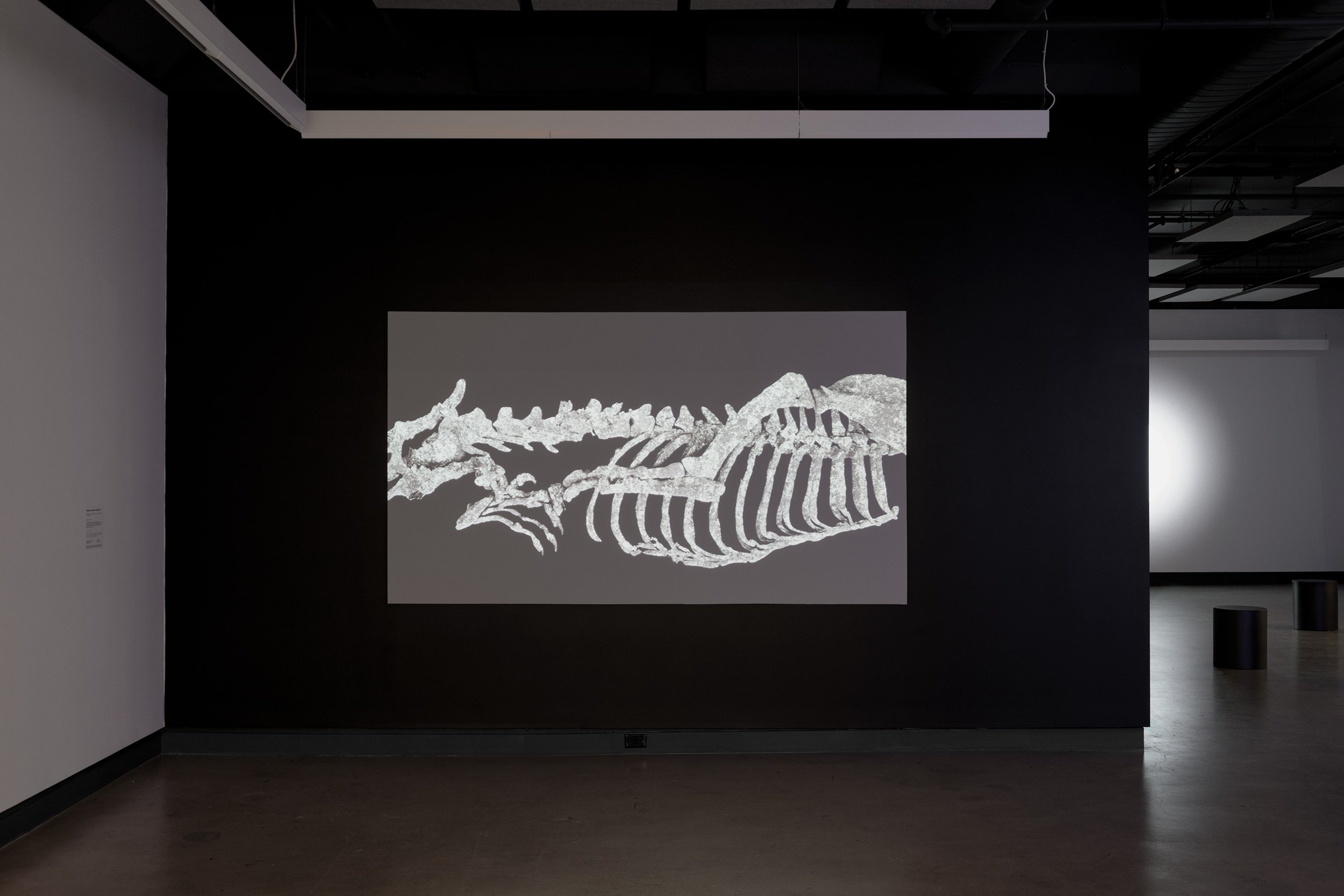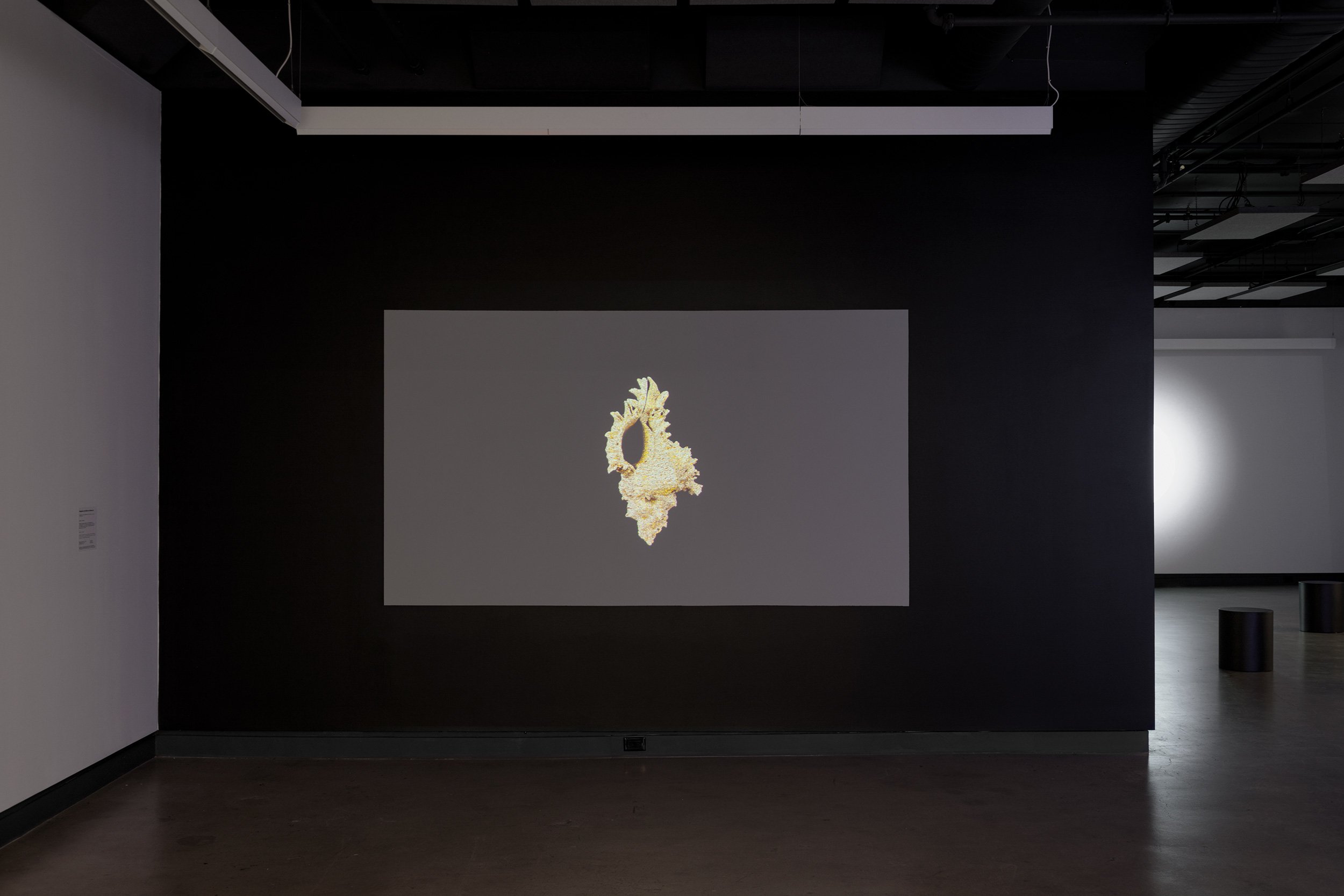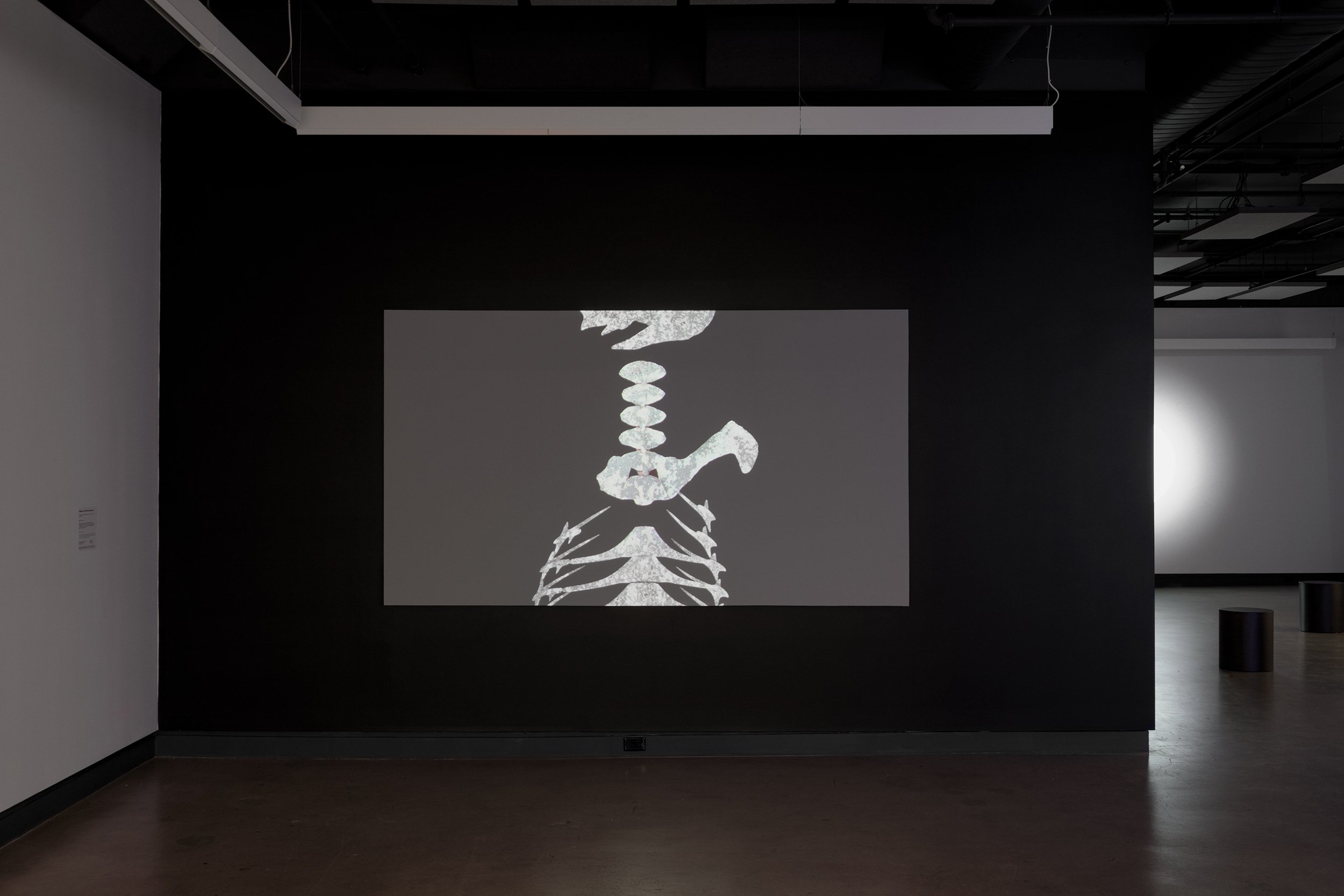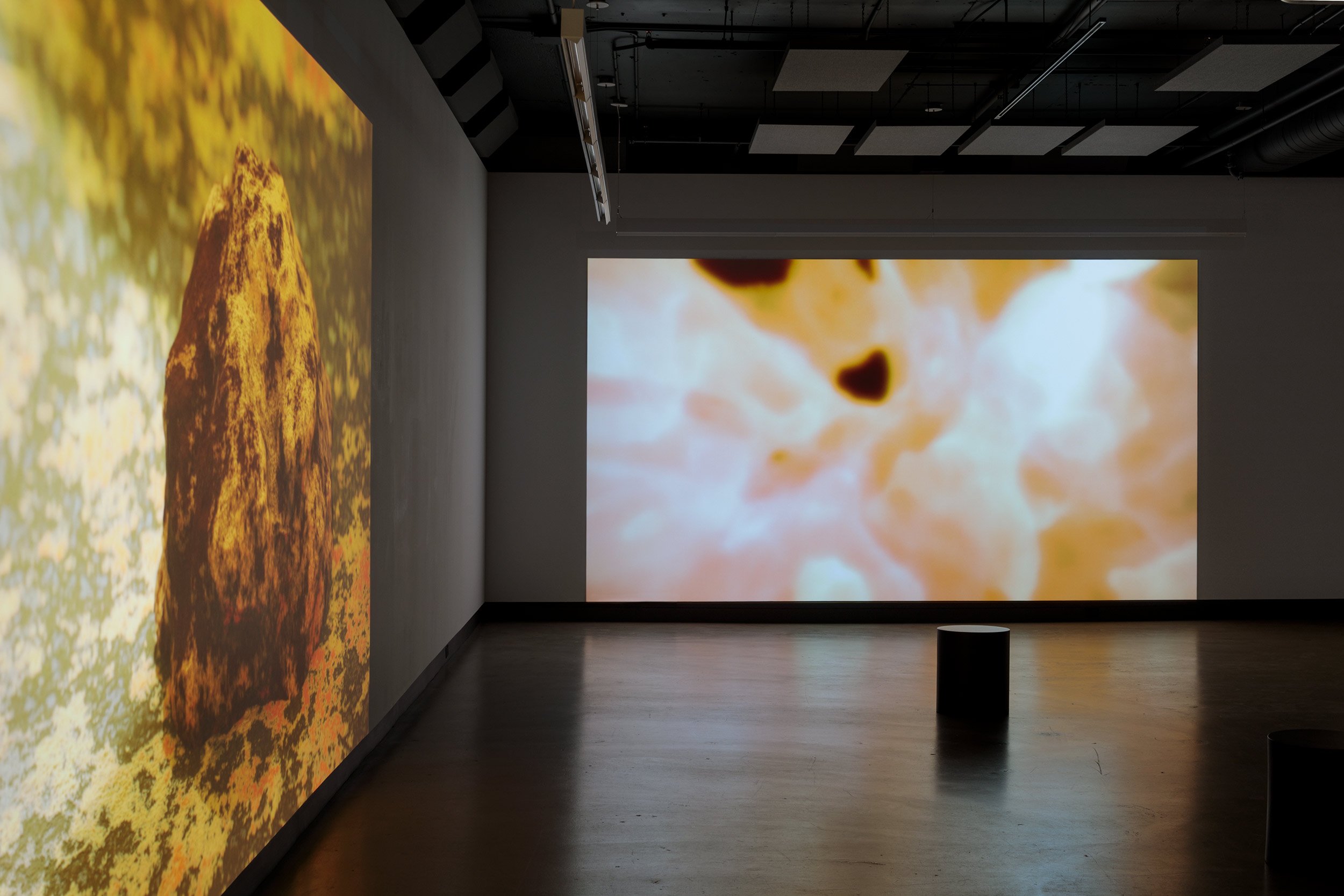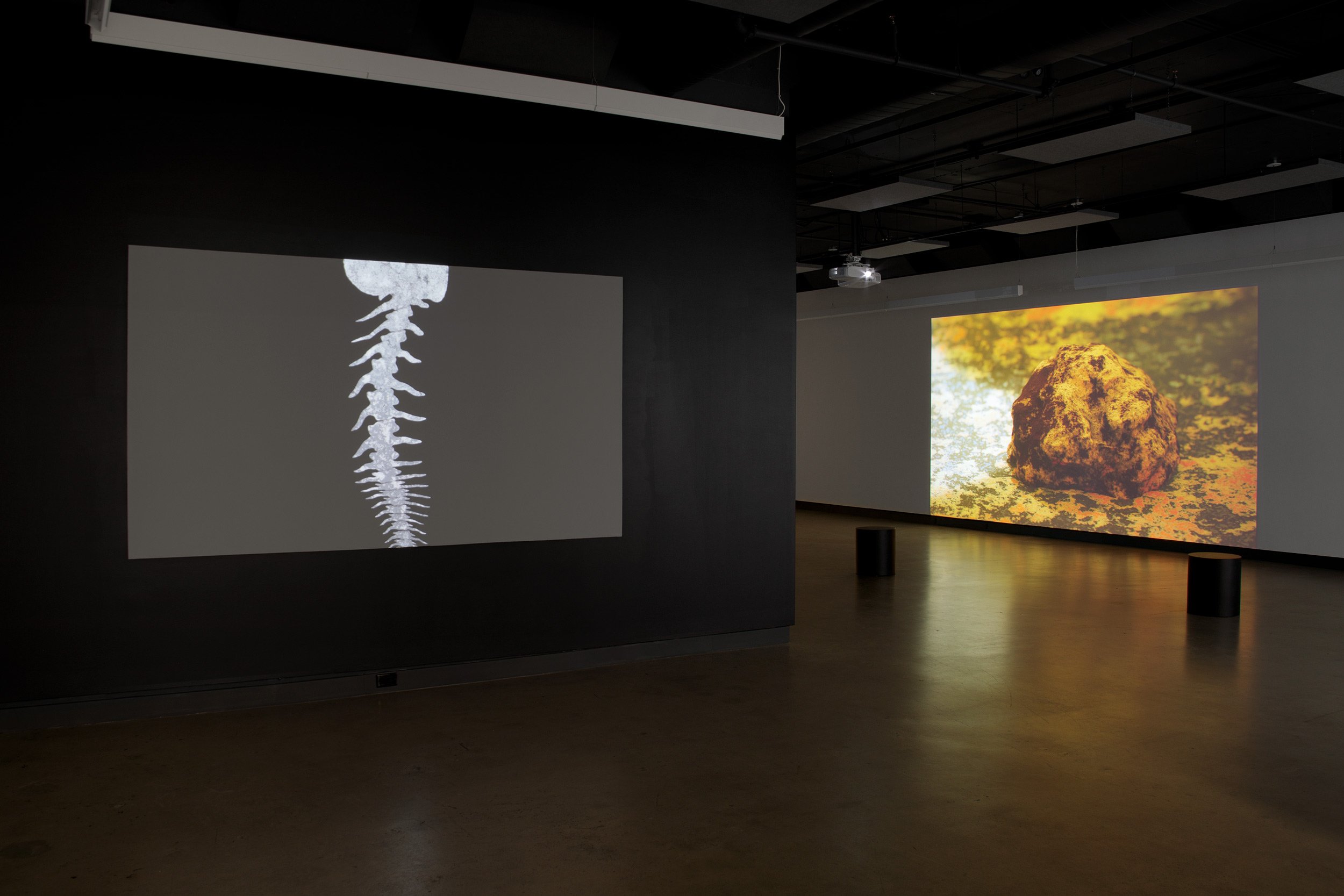Julie Tremble
Abiogenèse : des étoiles aux momies
From November 17, 2022 to January 21, 2023
Opening on November 17 at 6 pm
— Facebook
Juxtaposing cinematic realism and science fiction, Julie Tremble puts forth a fascinating corpus of entirely computer-generated images. Saturated, extremely detailed, realer-than-real representations of planetary or celestial landscapes examine the nature of elemental composition and its role in the creation of all matter in the universe. Rooted in scientific knowledge, the artist proposes a philosophical reflection on life and the future of humankind, exploring different perspectives appealing as much to reason as to technological speculation. A video portrait of actress Luce Guilbeault — an iconic figure of Québec cinema and late 20th-century feminism, who died prematurely at the age of 56 — depicts her at the age of 127, as she would be today. In an introspective monologue, the actress imagined by Tremble, with a superb voice-over by Sylvie Moreau, revisits her life and significant moments in women's history, questioning representation and embodying a hypothetical future for humans — a future confected from scientific and technological advancements that forcefully redefine numerous ethical, political and social issues.
With this project, Tremble proposes a virtual experience that enables us to visualize a future beyond Earth, a sort of life after death. Out of sidereal space, she lays out a site for links between the microcosm and the macrocosm. By staging a synthetic appearance of life on Earth, the artist questions our humanity, aspirations and quests. Under the veneer of futurism, Tremble examines the present — this precarious moment in which humanity finds itself, in which difficult, often irreversible decisions shall be made in function of what humans identify as priorities, for the benefit of what and of whom.
If humanity succeeds in reversing the natural degeneration of systems and death after maturity, what might the future hold? Different philosophical alternatives address these questions. Transhumanism, while adhering to the values of humanism, recognizes and anticipates radical changes in nature and new forms of life brought forth by science and technology. Posthumanism pushes even further and suggests a posthuman future, a kind of endgame of artificially perpetuated evolution that some even conceptualize as technological singularity, where a new intelligent species would permanently supplant humans.
Such are the wonderful existential paradoxes evoked by Julie Tremble. One might wonder if technological advancements, space exploration, and the reduction of living or non-living matter to their composition as elements from the periodic table, do not speak more to a struggle against life’s limitations than to society’s evolution, be it scientific or otherwise.
— F.C.
Abiogenèse: des étoiles aux fossiles (2022)
4 channel installation, 3D animation — 15 min. 50 sec.
Tableau I — Fossiles
Evoking the passage of time over millennia and the transformation of life into fossil, animal skeletons and shells revolve as though on display in an ageless, placeless museum.
Tableau II — Stromatolites
Somewhat of a prequel for life as we know it, Stromatolites depicts a time 3.5 billion years ago when the air was not yet breathable and the Sun was smaller and less hot. Under a hazy yellow sky, stromatolites have begun to grow, rising out of the shallow water covering most of the planet. These mineral formations are generated by cyanobacteria, the Earth’s oldest living organism, also responsible for the oxygen that eventually gave way to a liveable atmosphere.
Tableau III — Coatlicue (diptych)
Unofficially, Coatlicue is the name of the star considered by some astrophysicists to have, upon its explosion, initiated the solar system’s creation. In the first of two animations, Tremble depicts the hypothetical lifespan of this star, from the moment it ignites to the moment it explodes. Playing on the mind-bending inconceivability of its scale, how in fact the star is a concentration of gaseous matter within an ensemble of gases, the second animation illustrates Coatlicue’s inner landscape, meaning its nuclear activity, made from spectra images of elements from which the star is composed, such as hydrogen and iron.
Sound design: Bruno Pucella
Colorization: Guillaume Millet
This animation was produced with the support of the Canada Council for the Arts and the Conseil des arts et des lettres du Québec.
Luce RTX3090 (2022)
3D animation — 11 min. 11 sec.
In Luce RTX3090, Tremble shifts her reflections on time, life, and being to contemplate some of today’s critical social issues such as economics and sovereignty over one’s body. This speculative fiction is situated in 2062. A digital rendering of the iconic Québec actress Luce Guilbeault is 127 years old (in reality Luce Guilbeault died in 1991 from cancer). She chronicles how in order to increase workforce productivity every person on the planet now undergoes a mandatory anti-aging treatment that maintains the body as though they are 25 years old. But, in order to control overpopulation, at 65 years old, their bodies turn to dust. Within the same introspective monologue, she also considers how her life as an actress, captured on film, will contribute to her own immortality.
Script consultants : Markita Boies, France Choinière
Sound recording: Émilie Blaise
Sound design: Bruno Pucella
Colorization: Guillaume Millet
This animation was produced with the support of the Canada Council for the Arts and PRIM.
Julie Tremble is a video and animation artist. Informed by cinema, literature and philosophy, since 2014 she has focused on the question of representation in astronomy. From different sources such as scientific articles, educational documentaries, digital simulations, and communication texts from space agencies, she produces videos and animations that blend scientific data, documentary and science fiction.
Julie Tremble holds a Master’s degree in film studies from the Université de Montréal (2005) with an undergraduate in cinema and philosophy (2000). Tremble’s work has been exhibited nationally and internationally at galleries including the Ludwig Museum (Budapest), the Foreman Art Gallery and Sporobole (Sherbrooke), the Fonderie Darling, Galerie B-312, Galerie Joyce Yahouda and Dazibao (Montréal), VU (Québec), and festivals such as Mirage Festival (Lyon), MAPP MTL, the Festival du nouveau cinéma and the International Festival of Films on Art (Montréal), Images Festival (Toronto), Espace [IM] Média triennial and ARKIPEL - Jakarta International Documentary and Experimental Film Festival. She will also present a work at the STUDIOTELUS of the Grand Théâtre de Québec in 2023. In 2013, Tremble was the recipient of the Conseil des arts et des lettres du Québec award for best work in art and experimentation.
Julie Tremble warmly thanks Markita Boies, Ariel Borremans, the Canada Council for the Arts, the Conseil des arts et des lettres du Québec, PRIM and Sylvie Moreau.
Outreach
Meet the artist
Julie Tremble
On November 26, 2022 from 2 pm to 4 pm
In the context of her exhibition, Julie Tremble will be in the gallery between 2 pm and 4 pm to speak with the public and answer questions.
Swing by Dazibao to see the exhibition and meet the artist in an informal setting!
Meet the artist
Julie Tremble in conversation with Christophe Malaterre
In the context of her exhibition, Julie Tremble discusses with Christophe Malaterre, philosopher, professor and head of The Canada Research Chair in the Philosophy of Life Sciences.
Other exhibition
Screaming Screen
From November 17, 2022 to January 21, 2023
Mediation
À l’image — Takeover 2
À l’image — Takeover is a participatory art series in which, over two years, a group of young Montrealers intervenes and responds to Dazibao’s exhibition programming, collaborating with each other and their mentor, artist Veronica Mockler.
An exhibition prepared for Dazibao by France Choinière, in close collaboration with the artist. Dazibao thanks the artist for her generous collaboration as well as its advisory programming committee for its support.
Dazibao receives financial support from the Conseil des arts et des lettres du Québec, the Canada Council for the Arts, the Conseil des arts de Montréal, the Ministère de la Culture et des Communications and the Ville de Montréal.
Dazibao acknowledges that we are located on unceded territory of the Kanien'kehá: ka Nation and that Tiohtiá: ke / Montreal is historically known as a gathering place for many First Nations, and today, is home to a diverse population of Indigenous as well as other peoples.

